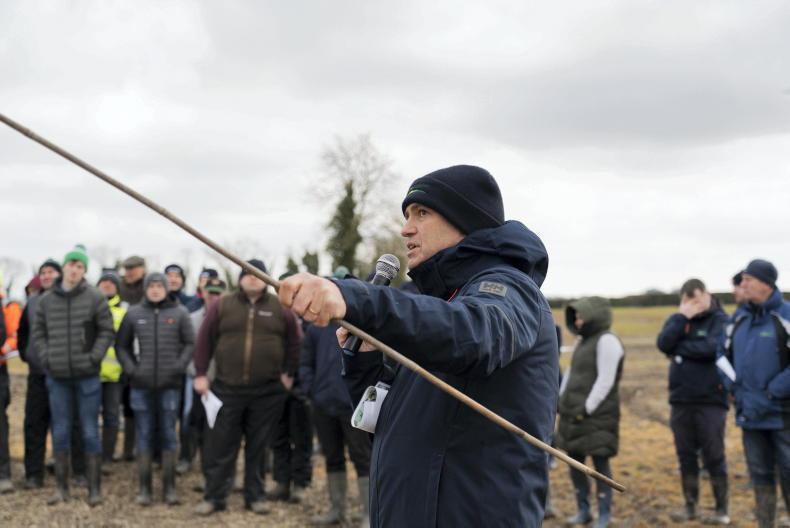At a Teagasc Signpost walk on Thursday 7 March, many farmers were shocked to hear of yet another requirement for a buffer zone on their farm.
Hugh Rooney, who works on the Agricultural Sustainability Support Advisory Programme (ASSAP) with Teagasc, was speaking on the Kepak Farm in Co Meath explaining the buffer zone requirements on farms.
He described three scenarios as follows:
Beside a watercourse, a 3m uncultivated buffer is required and this cannot be sprayed or fertilised.Beside a dry drain or a water feature, plant protection products cannot be sprayed and fertiliser cannot be spread in the 3m from the top of the bank.A watercourse which had a hedge growing on one side of the drain, he said that the hedge counts for 1m of the buffer and another 2m needs to be left on the other side of the hedge.On late harvested crops, such as potatoes or maize, the buffer needs to be 6m instead of 3m.
Using a hedge as a buffer
When learning about critical source areas and how to improve water quality, planting a hedge is one thing that comes up again and again.
A hedge or trees can be planted in the path where phosphorus may get to water. However, it seems a hedge does not suffice in this case and a further 2m is needed to be left on the other side, which it should be noted Kepak had adhered to by planting a margin of Timothy and Cocksfoot.
Buffer confusion
Buffer zone requirements on farms have been unclear since day one of the CAP. There seems to be something new to learn every season.
Recent clarification by the Department of Agriculture at training for advisers has helped, but farmers remain angry at the amount of land being lost to these buffer zones, particularly when rules do not take land out of production on livestock farms.
At a Teagasc Signpost walk on Thursday 7 March, many farmers were shocked to hear of yet another requirement for a buffer zone on their farm.
Hugh Rooney, who works on the Agricultural Sustainability Support Advisory Programme (ASSAP) with Teagasc, was speaking on the Kepak Farm in Co Meath explaining the buffer zone requirements on farms.
He described three scenarios as follows:
Beside a watercourse, a 3m uncultivated buffer is required and this cannot be sprayed or fertilised.Beside a dry drain or a water feature, plant protection products cannot be sprayed and fertiliser cannot be spread in the 3m from the top of the bank.A watercourse which had a hedge growing on one side of the drain, he said that the hedge counts for 1m of the buffer and another 2m needs to be left on the other side of the hedge.On late harvested crops, such as potatoes or maize, the buffer needs to be 6m instead of 3m.
Using a hedge as a buffer
When learning about critical source areas and how to improve water quality, planting a hedge is one thing that comes up again and again.
A hedge or trees can be planted in the path where phosphorus may get to water. However, it seems a hedge does not suffice in this case and a further 2m is needed to be left on the other side, which it should be noted Kepak had adhered to by planting a margin of Timothy and Cocksfoot.
Buffer confusion
Buffer zone requirements on farms have been unclear since day one of the CAP. There seems to be something new to learn every season.
Recent clarification by the Department of Agriculture at training for advisers has helped, but farmers remain angry at the amount of land being lost to these buffer zones, particularly when rules do not take land out of production on livestock farms.






 This is a subscriber-only article
This is a subscriber-only article











SHARING OPTIONS: